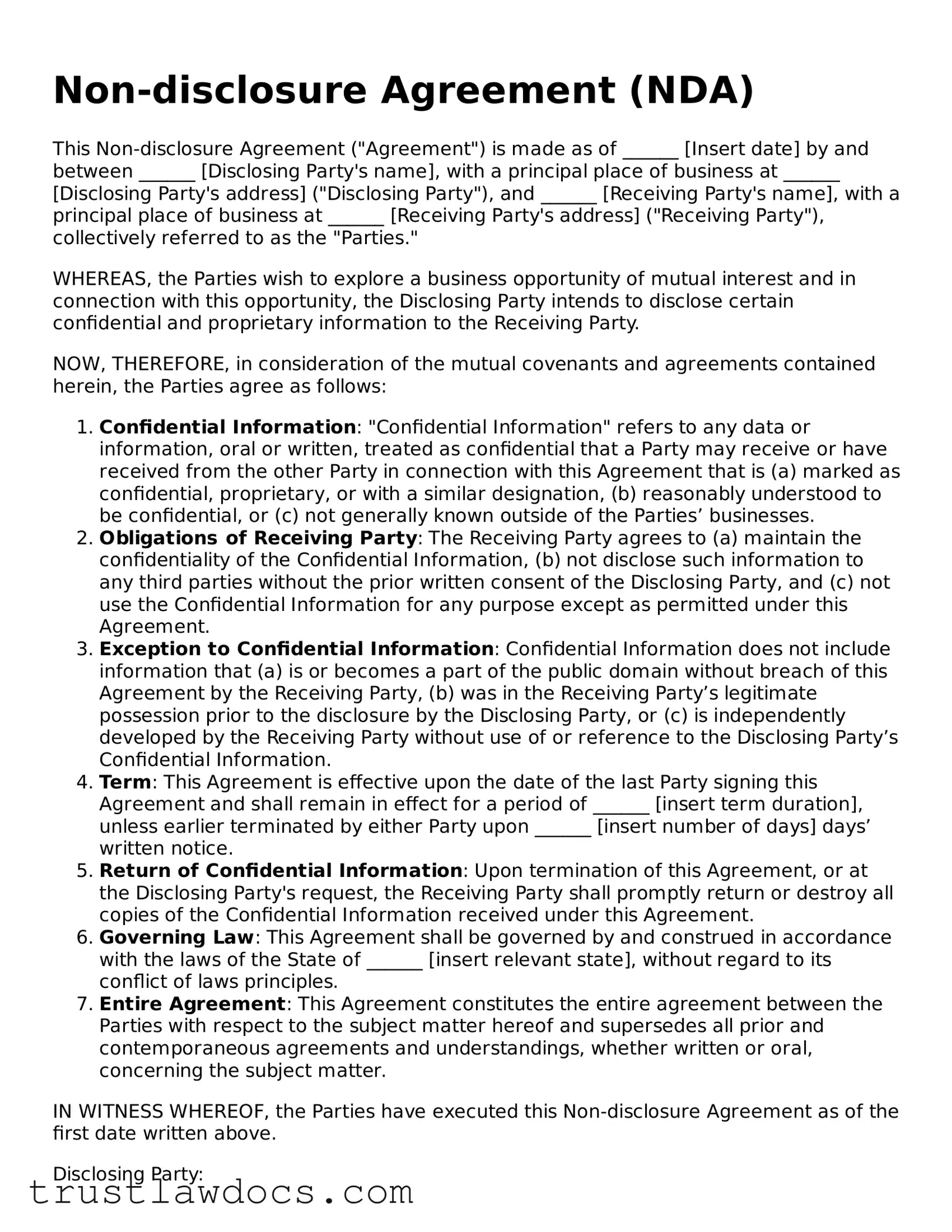What is a Non-disclosure Agreement (NDA)?
An NDA is a legal contract establishing a confidential relationship. The parties agree not to disclose information covered by the agreement. It is often used to protect sensitive information and trade secrets.
When should I use an NDA?
Use an NDA when sharing private information with another party, like business plans or proprietary data, especially if this information is crucial to your competitive advantage. NDAs are common during negotiations, partnerships, or when hiring new employees who will handle sensitive information.
Are there different types of NDAs?
Yes, there are two main types: unilateral and bilateral. A unilateral NDA, also known as a one-way NDA, involves two parties where only one party shares confidential information. A bilateral NDA, or mutual NDA, involves both parties exchanging confidential information and agreeing to keep it secret.
What key elements should be included in an NDA?
An effective NDA should clearly define its scope, including what is deemed confidential, the obligations of the receiving party, exclusions from confidentiality (such as public domain information), the term (duration), and any applicable jurisdiction or law should disputes arise.
How long does an NDA last?
The duration of an NDA can vary. It might last until the information becomes public or for a set period after the relationship ends. The term should be explicitly stated within the agreement to prevent any confusion.
Can I terminate an NDA early?
Yes, parties can mutually agree to terminate an NDA early. This agreement should be in writing. However, the obligation to keep certain information confidential may not necessarily end with the termination of the NDA.
What happens if someone breaks an NDA?
If a party breaches an NDA, the non-breaching party can seek legal remedies such as suing for damages or requesting an injunction to prevent further disclosures. The specific consequences depend on the terms of the NDA and the nature of the breach.
Is an NDA enforceable in court?
Generally, NDAs are enforceable if they are reasonable in scope, duration, and geography, and if they protect legitimate business interests. However, enforceability can vary by jurisdiction.
Do I need a lawyer to draft an NDA?
While you can draft an NDA on your own, consulting with a lawyer ensures that your agreement is legally sound and fully protects your interests. A lawyer can also help tailor the NDA to your specific situation.
